A commitment to safety as a fundamental characteristic of our products and services is part of our culture at Leonardo. Our customers’ flight safety is our top priority and delivering safe helicopters is our primary objective. This approach is at the heart of all our activities, from design and production to customer services, with the aim of exceeding the most rigorous safety standards and continuously developing and supporting safety in every aspect.
Safety
Safety by organisation
Leonardo’s Safety Management approach is reflected in every structure of its internal organisation and throughout the entire business network.
Leonardo is a unique and structured entity, encompassing the full helicopter lifecycle: design and related certification (including supplier management), manufacturing, sales, maintenance and continued airworthiness, training for all personnel, and support for accident/incident investigation agencies.
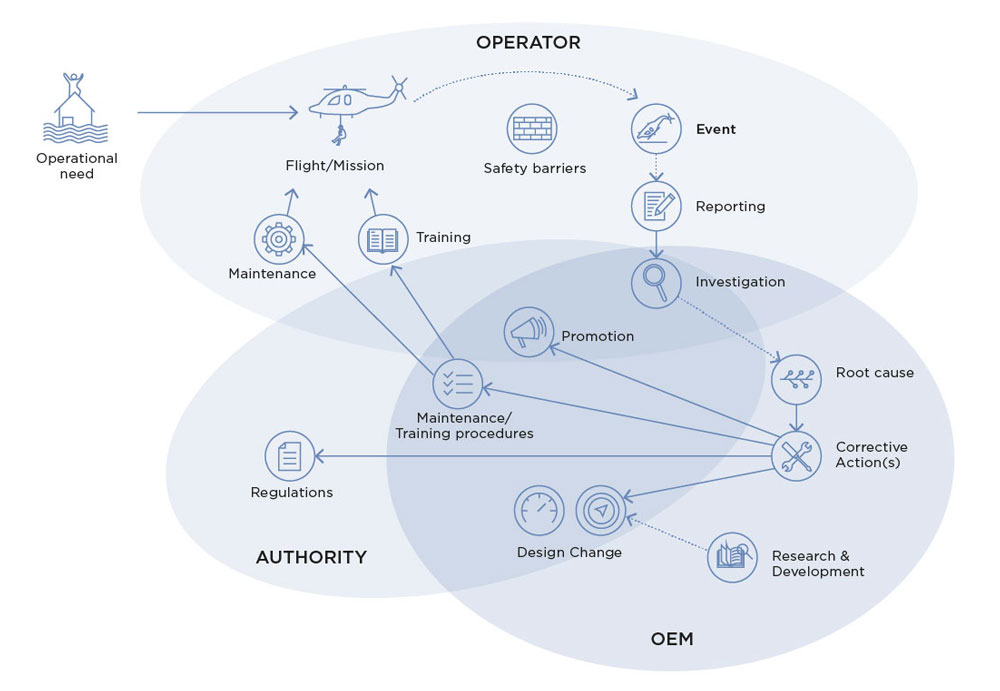
The Safety Management System (SMS) has been designed to reinforce Leonardo’s capabilities to identify, prevent and predict – proactively and from the bottom up – safety risks by addressing strong signals as well as weak signals – the first being after the event, the latter being early signs – before they can lead to accidents/incidents.
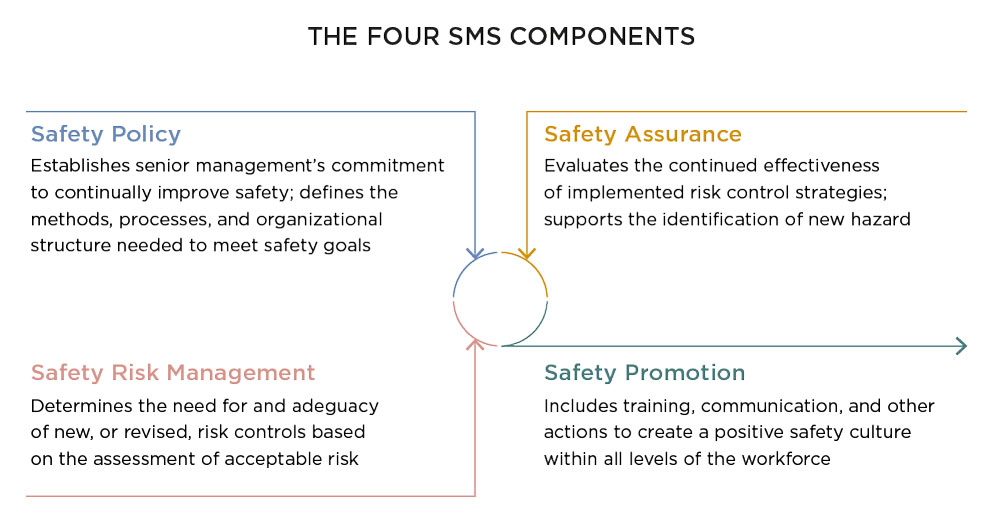
Leonardo’s safety governance is guaranteed through the System Safety Governance (SSG) and by the Safety Management Systems (SMS) embedded in every branch of its organisation. These include those for Design, Production, Maintenance, and Customer Support and Training, as well as for other specific SMS designed as appropriate. These have a unified governance within Leonardo’s single safety identity, whilst maintaining close proximity to their design and operational context.
Interface with the external stakeholders, including the relevant authorities, customers and suppliers, is part of Leonardo’s global safety management approach. The SSG addresses all interfaces in a single view, reporting and managing any weak safety signal as soon as it emerges.
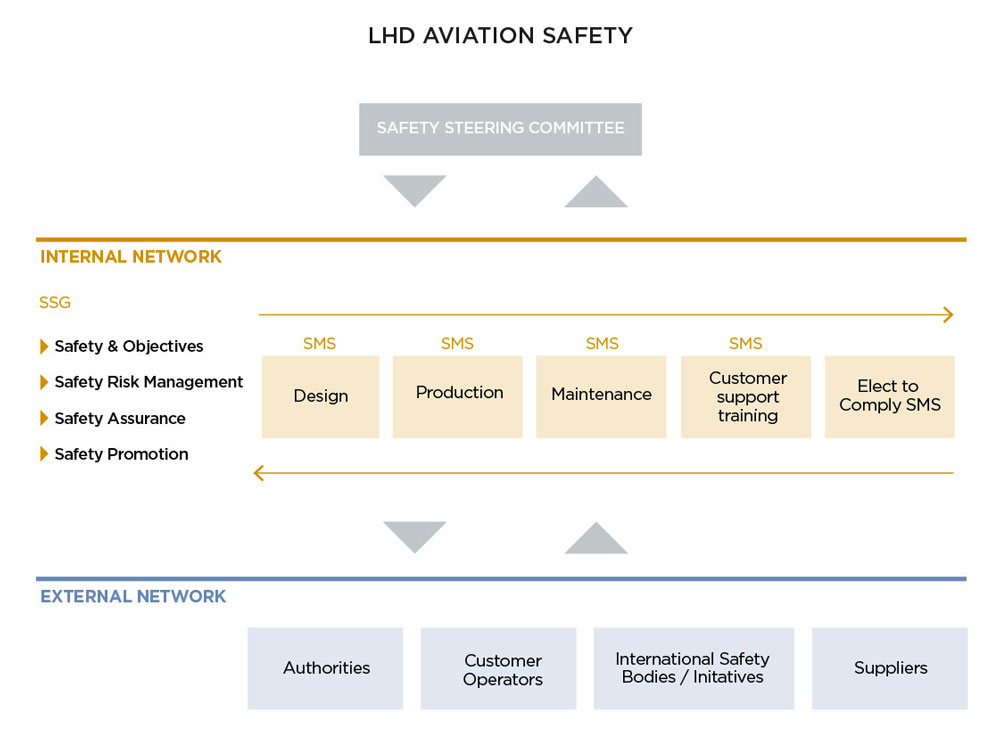
Safety by design
The safety of Leonardo’s helicopters is based on the heritage of many decades’ experience in helicopter design and over a century of manufacturing and flying aircraft.
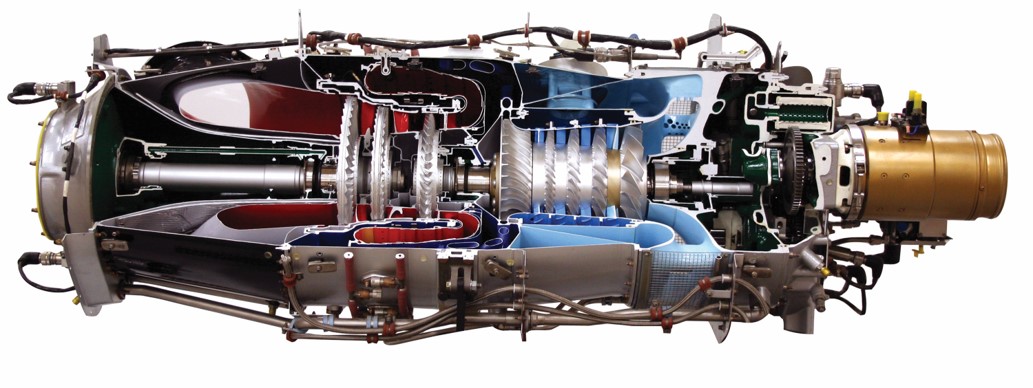
Good controllability combined with stability are key factors in ensuring safe operations, and are the result of one of Leonardo’s design pillars: superior performance, a balanced mix of automation and flight procedures, smooth handling and robust safe design beyond minimum certifications requirements.
There are several specific modes and envelope protection features of our Automatic Flight Control Systems (AFCS), which provide crews with a reliable and automated safety net.
Among others, the Wing Level function available on most of Leonardo’s designs is a good example, providing the pilot with an automated solution to help regain situational awareness in the event that spatial disorientation has resulted in undesired and unintended aircraft attitudes.
Avionics and navigation support
Leonardo invests in continuous technological improvement of on-board systems to offer new solutions for pilot workload reduction, further expansion of crew situational awareness, and state-of-the-art Instrument Flight Rules (IFR) all-weather operation flight solutions.
IFR navigation capability can greatly enhance the safety of helicopters' flight operations. Leonardo’s product range of civil helicopters have today fully certified Performance-Based Navigation (PBN) capabilities from B-RNAV (RNP5) to RNP0.3, all phases of flight, and RNP AR APCH up to RNP0.3 minima, and are ready to take safety advantage of PBN-certified routes and flight procedures. The PBN solutions, together with the GLS (GBAS landing system) capabilities already certified on the AW189, provide safe and precise flying paths from take-off to landing, with the potential to overcome weather dependencies. PBN capabilities are also available on the latest military products, ensuring new and greater operational flexibility.
A Synthetic Vision System (SVS) is another very powerful instrument which improves situational awareness and safety beyond standards. SVS is available on all Leonardo’s latest products, and on AW139 it has been integrated with Helicopter Terrain Awareness and Warning System (HTAWS), as provided by Honeywell Primus Epic System Phase 8. This constitutes a further improvement to pilots’ situational awareness, especially in marginal Visual Flight Rules (VFR) and night operations where the pilot benefits from automatic terrain and obstacle detection.
Safety by Customer Support
Customer Portal
Leonardo’s commitment to customer proximity and improving its helicopters’ availability and efficiency helps ensure the fulfilment of its primary duty of guaranteeing safe operations. The new area dedicated to customers provides direct access to all updated publications and information including the latest manuals, bulletins, maintenance instructions, information letters and safety information documents which are essential for maintaining up-to-date safe helicopter operations.
Safety by training
Safe operations require thorough training and awareness from flight and maintenance operators. Leonardo believes in the key value of sharing the best safety practice through training, which is designed around products, experience, customers and their operations.
Safety by Lesson Learned
In case of a helicopter accident or serious incident, the investigation process must be carried out with precision and objectivity, to uncover the root causes and prevent future occurrences. To facilitate this process, in the civil environment, the International Civil Aviation Organization (ICAO) has established guidelines under Annex 13 to the Convention on International Civil Aviation. Annex 13 outlines the procedures for aircraft accident and incident investigations, with a particular focus on the roles and responsibilities of various parties involved in the process. One such key player is the helicopter manufacturer, who often acts as Technical Advisor (TA) of the Accredited Representative (AccRep) during the investigation.
The Accredited Representative for the State of Registry, State of Operator, State of Design or State of Manufacturer is appointed to participate in an investigation conducted by another State, typically the State where the accident occurred (the State of Occurrence). The Accredited Representative's role is to ensure that their state’s interests are protected and to contribute technical expertise to the investigation. For Italy, the Accredited Representatives are investigators from Agenzia Nazionale Sicurezza del Volo (ANSV), that is the independent Italian national investigation authority. The accredited representative can request the support of Technical Advisors, such as Leonardo as helicopter manufacturer, to provide specific knowledge about the design, operation and maintenance of the helicopter involved. In those cases, Leonardo’s Accident Investigation office brings specialised expertise that is crucial to understanding the technical aspects of the events under investigation.
The activities performed during the investigation process by Leonardo accident investigators, as Technical Advisor to the Accredited Representative under Annex 13, can be outlined as follows.
Note: For the military helicopters, the ICAO Annex 13 is not applicable and the Ministry of Defence of the nation of occurrence, thorough its military authority’s organisation, is in charge for the investigation. Leonardo totally supports the investigation when requested by the military authorities, guaranteeing the required level of classification of the information.
Leonardo, as helicopter manufacturer, possesses in-depth knowledge of the helicopter’s design, performance characteristics, systems and components. As such, during the investigation, the Company provides essential information regarding:
- Aircraft design specifications: Leonardo offers detailed documentation about the aircraft’s systems, flight controls and structural design, which helps investigators to assess if the design can have played a role in the accident.
- Operational limitations and performance data: Leonardo’s Accident Investigation office advises on the helicopter’s flight envelope and performance during various operational conditions, and how the helicopter could have behaved during the accident. The most probable scenario can be evaluated by the Investigation Team at the Full-Scale Simulator, with the support of Leonardo’s Operational Department.
Maintenance history and service bulletins: Leonardo provides historical data on the helicopter's maintenance requirements, any issued service bulletins or safety directives, and any prior technical issues that could be relevant to the investigation.

In cases where the helicopter is severely damaged, the Leonardo Investigator’s expertise becomes essential in performing the wreckage survey (after the event a dedicated Go-Team is dispatched to support the onsite activities), in identifying and interpreting specific failure modes.
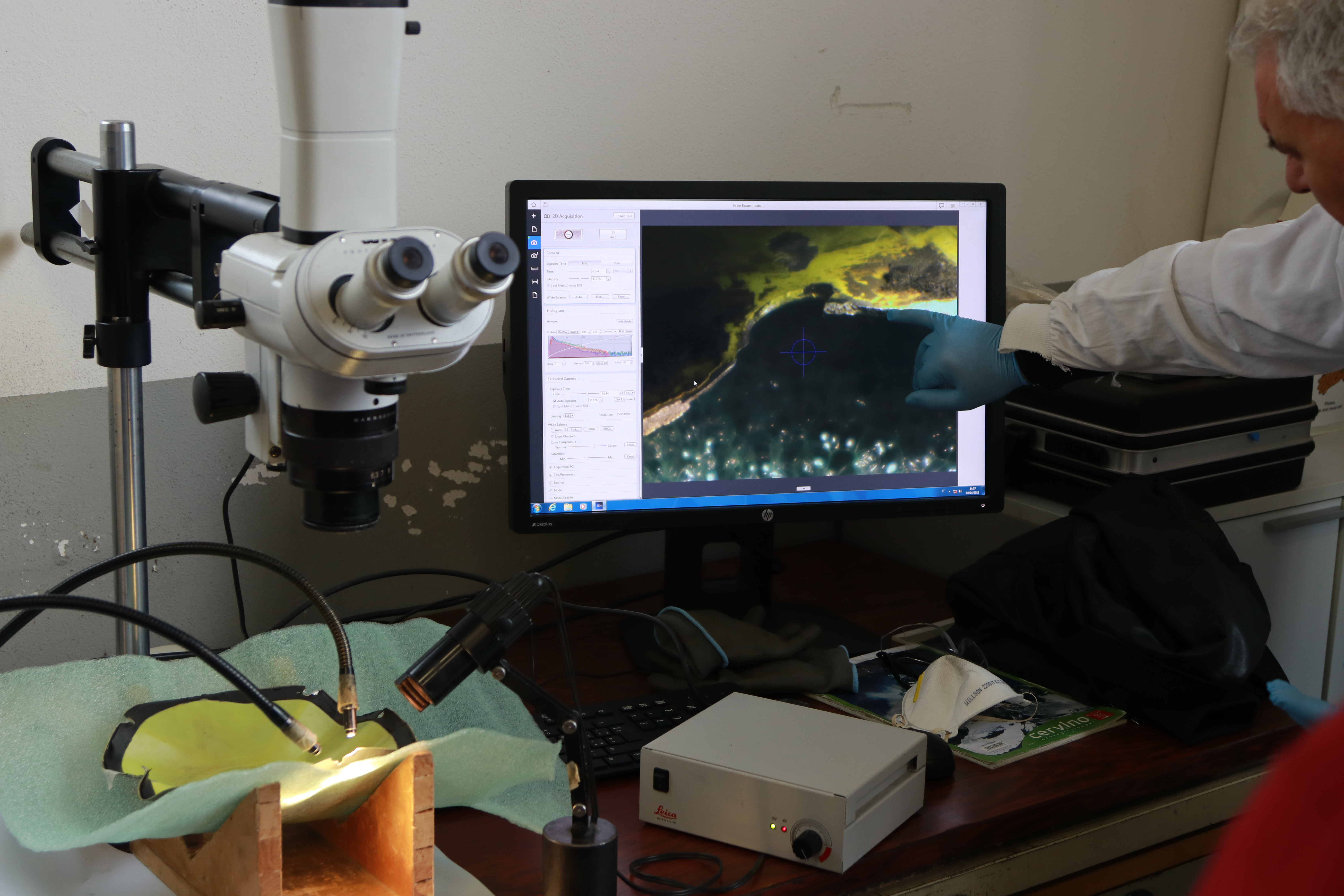
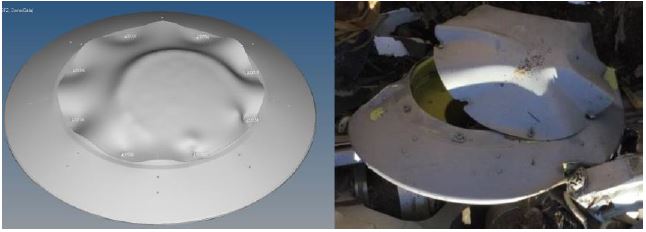
- Decoding data: Leonardo’s specialists download flight data from FDR and all devices installed on HC fleets that record data on Non-Volatile Memories (NVM) and provide critical insights into what the aircraft was doing in the moments leading up to the accident.
- Correlating data with technical performance: once the data is analysed, Leonardo’s specialists correlate the recorded information with the aircraft’s performance capabilities and expected behaviour, helping investigators understand any deviations from normal flight parameters.

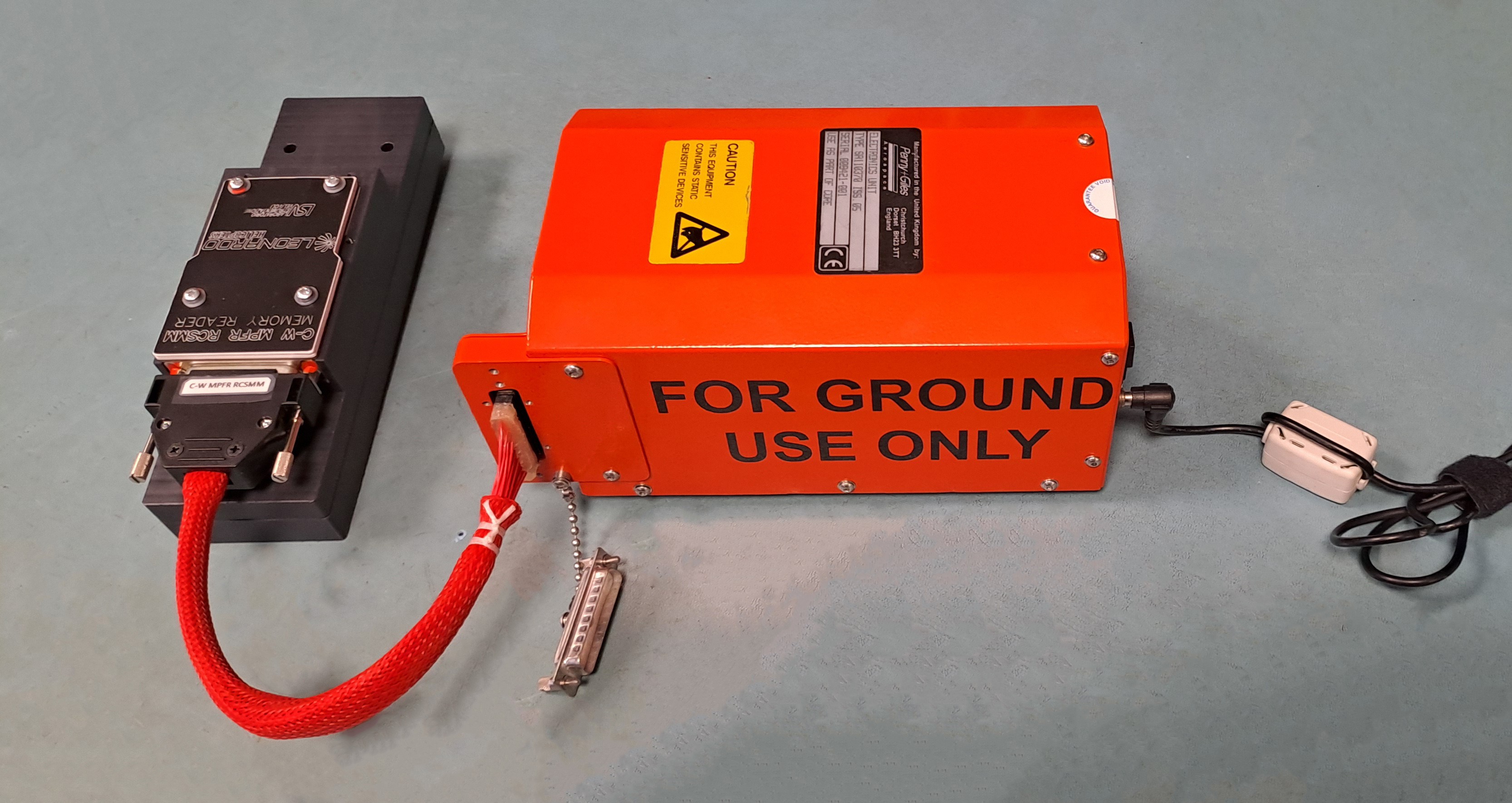
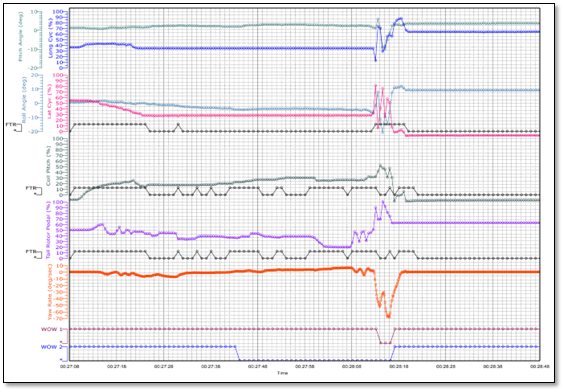
Based on the technical data, operational limitations and physical evidence, the Company’s accident investigators play an integral role in helping the Investigator in Charge and the investigation team to reconstruct the accident sequence. This process may involve:
- Simulating flight conditions: using 3D flight simulation tools, Leonardo’s Data Specialists can model the accident scenario based on the available data to offer possible explanations for the sequence of events. The CVR data are synchronised with the FDR data and, if requested, a transcription can be performed.
- Assessing pilot-vehicle interaction: Leonardo’s Data Specialists analyses the interaction between the helicopter’s systems and the pilot’s inputs to determine whether there were any issues with handling or system response.


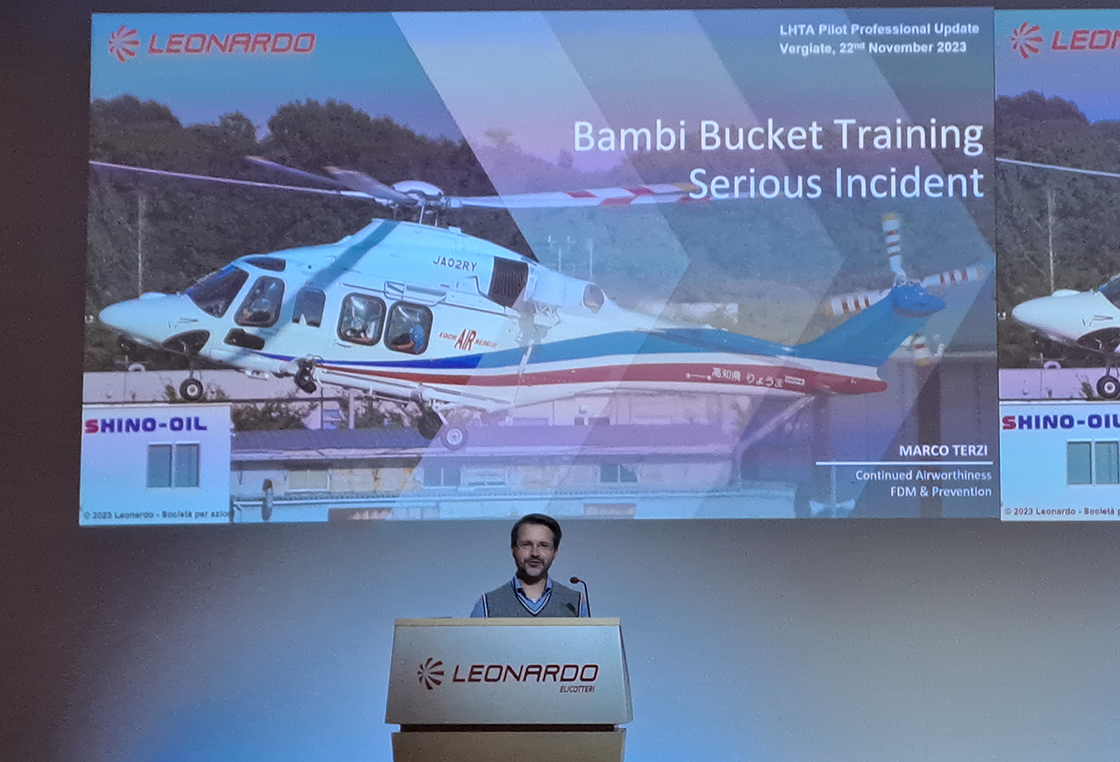
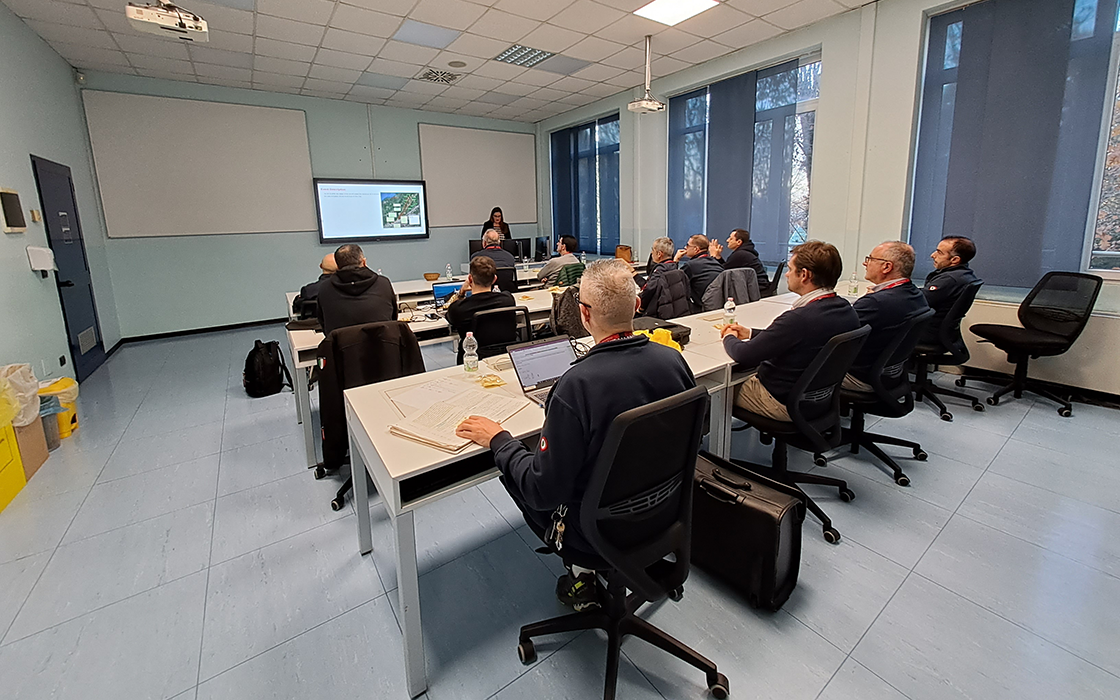
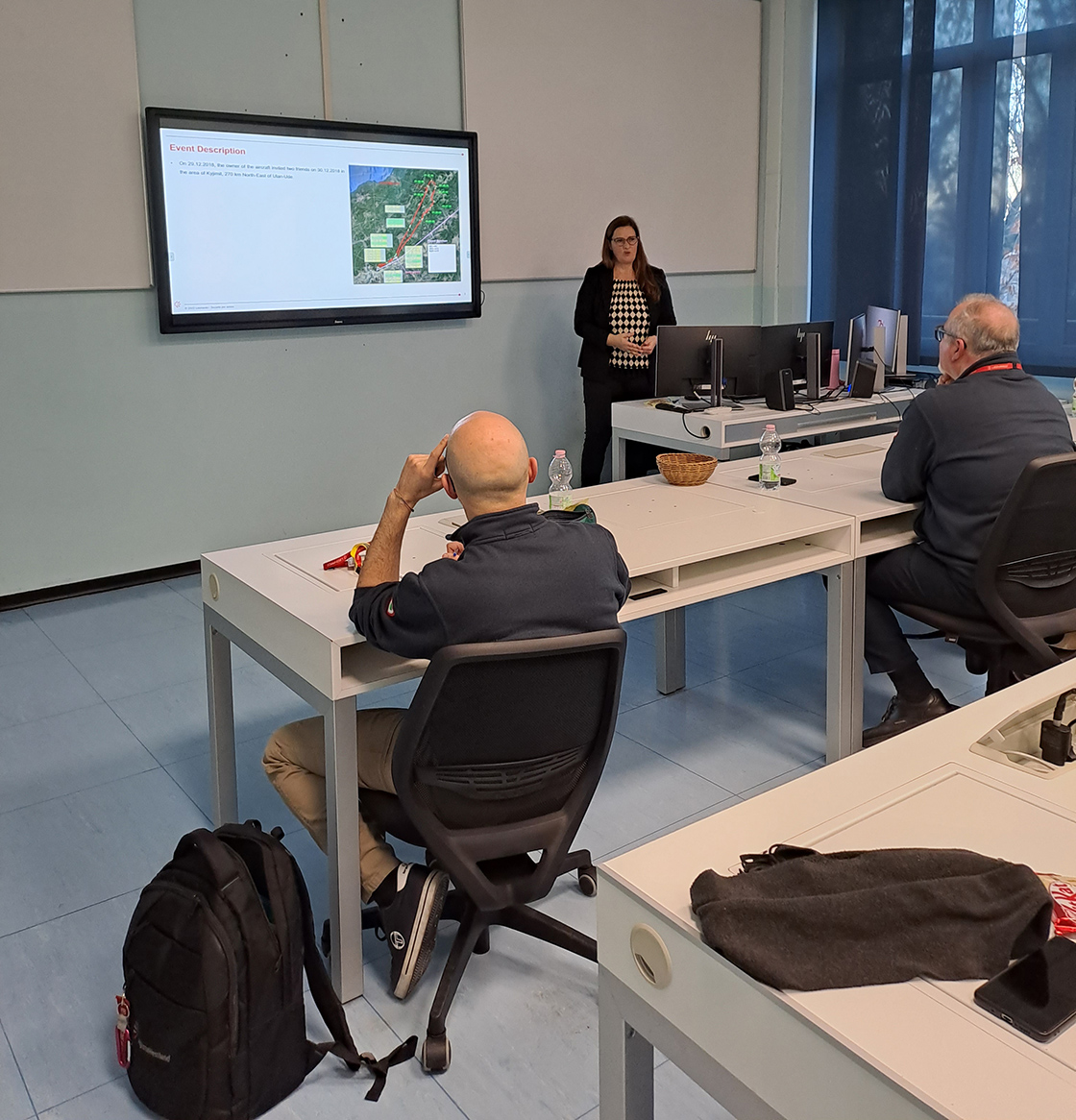
Leonardo’s accident investigators play an indispensable role as Technical Advisor to the Accredited Representative in the context of ICAO Annex 13 investigations. Leonardo’s investigators and technicians’ specialised knowledge is essential for understanding the causes of accidents and serious incidents, providing insights that contribute to the overall safety of helicopter operations. Through collaboration with the accredited representative and the lead investigation authority, the manufacturer helps ensure that the findings lead to meaningful safety improvements, thereby reducing the likelihood of future accidents. Over the years, by collaborating with safety investigation entities, Leonardo has made significant strides that have led to improvements in aircraft design, maintenance practices, training, operational procedures and overall safety management. These experiences have been pivotal in driving advancements that prioritise safety at every stage.
In Leonardo, lessons learned are typically identified through the following stages:
- Root Cause Analysis: Leonardo’s investigators use tools like the “5 Whys,” “Fault Tree Analysis”, or “Fishbone diagrams” to trace the cause of the accident back to its origin. This analysis helps to identify causes of the incident.
- Beyond the root cause, Leonardo’s investigators identify all factors that may have contributed to the accident. These can include, as example but not only, Human Factors, meteorological events, communication.
- Leonardo’s investigators apply the “Bow-Tie” techniques to evaluates whether existing safety barriers, like procedures, are adequate or needs an improvement.
- Leonardo’s Investigators, in synergy with the Safety Management System (SMS) department, also examine the broader organisational context, looking at how leadership, management decisions, safety culture and personnel (operative and maintenance) training could have contributed to the safety event.
- Extracting Lessons in a prevention perspective: the final task can be to summarise the findings into actionable lessons. Once lessons have been identified, the issuance of a Safety Information Notice comes in. A “Safety Notice” is a Leonardo accident investigation office publication that, based on the investigation’s findings, provides advice on preventing similar events in the future.
- A brief description of the safety topic.
- A summary of the investigations’ results, including root causes and contributing factors.
- The lessons learned from the investigation.
- The recommendations to avoid the re-occurrence of the event, usually developed into short term actions.
- About ICAO
- Safety Report
- Accident and Incident investigation support
- European Safety Promotion Network Rotorcraft (ESPN-R)
- Rotorcraft Community
- In case of accidents or serious incidents involving Leonardo products, please proceed as follows:
- Contact LH Accident Investigation office at safety.LHD@leonardo.com
- Contact LH Customer Support at 24.7fleetoperationscentre.aw@leonardo.com
- In case of accidents or serious incidents occurred in Italy involving Leonardo’s civil products, please inform:
- Italian National Investigation Authority (ANSV) at safety.info@ansv.it copying LH Accident In-vestigation office (safety.LHD@leonardo.com) for future coordination.
Safety by collaboration
Safety requires collaboration that includes every stakeholder. Leonardo is an active partner in all the major safety networks and a proactive player in numerous safety-related initiatives and promotion activities in our sector. This cooperation ensures the company stays up-to-date with the latest safety developments and provides a seat at the table for all major discussions and projects, national and international that aim to promote and improve safety.
Leonardo’s collaborative approach puts safety at the heart of its operations and helps the company ensure the same for its customers. Below you can read details of just some of Leonardo’s recent and ongoing projects.
Leonardo and ENAV have joined forces to develop innovative solutions for a more efficient use of helicopters in the dedicated IFR (Instrument Flight Rule) air space, which focus on digitalisation, sustainability and safety.
Through this innovative collaboration, the two companies combine their industrial capabilities for design, production, supply and support of modern, high-performance helicopters with ENAV’s expertise in the development and management of air space in Italy and overseas.
Performance Based Navigation (PBN) is the latest generation of IFR procedures based on Global Navigation Satellite Systems (GNSS). The latest certification standards of Leonardo’s helicopters, with their advanced systems and equipment, already allows the use of modern PBN navigation procedures, and ENAV has long been at the forefront of design for PBN procedures for both fixed- and rotary-wing aircraft. The adoption and implementation of PBN significantly enhances flight safety, environment protection, public service flexibility, responsiveness and effectiveness, and air transport efficiency.
PBN procedures, carried out through advanced satellite navigation, support air space optimisation, delivering greater flight operation safety thanks to superior navigation, approach and landing precision and accuracy, a key enabler particularly in certain weather conditions. It is combined with or replaces the more traditional land-based radio navigation systems.
Leonardo has developed an Infrared Stress Monitoring System (ISMS) for real-time monitoring of the stress to which helicopter crew members are subjected during operations. The ISMS was developed together with D'Annunzio University of Chieti–Pescara and the company Next2U, in collaboration with the Italian Army Aviation (Aviazione dell’Esercito, AVES).
ISMS uses infrared technology to identify the so-called "emotional variations" of an individual. A set of reactions – including heartbeat, breathing, hormone release and metabolic control – influence the skin temperature of some areas of the face, which is monitored using an infrared camera. The thermal data collected and processed through Artificial Intelligence algorithms constitutes an objective means of measuring the workload experienced by the pilot, based on Bedford Workload Rating Scale (BWRS) indexes. Patented algorithms allow finally identifying an integrated Stress Level Index (SLI) assessment. By assessing pilots’ reactions during flight operations, it will be possible to lower their workload and ensure safer mission planning.
This assessment of training effectiveness based on quantitative and objective measurements of pilot reactions provides a paradigmatic shift in evidence-based pilot training. Not only is ISMS an innovative and highly promising step towards safer, more effective and efficient pilot training, it also promises a longer-term view that will support cockpit design that reduces pilot workload and ensure safer operations well into the future.
The EASA Rotorcraft Together4Safety project has the objective of keeping users informed and updated with all the latest news and information, and providing safety tips specifically to the rotorcraft community. Joining the related Community Area allows receiving updates through email notifications.
Leonardo is an active partner of Together4Safety, contributing to the generation and review of safety promotion content. Sharing information and best practices are a key element for improving flight safety.
The European Plan for Aviation Safety (EPAS) constitutes the regional aviation safety plan for EASA Member States, setting out the strategic priorities, enablers and main risks affecting the European aviation system. EPAS is developed by EASA in close consultation with the EASA Member States and industry. Leonardo is an active partner of the EPAS collaborative approach, participating in the key rulemaking, safety-promotion and research tasks, towards the continuous improvement of the overall aviation safety in Europe.
European Helicopter Association (EHA) is a non-for profit association representing the interests of rotorcraft Operators at European and international Institutions.
It provides advocacy towards the European Aviation Safety Agency (EASA), European Defence Agency (EDA), European Commission (EC), European Parliament (EP), Eurocontrol, the SESAR Joint Undertaking (SJU), the Joint Authorities for Rulemaking on Unmanned Systems (JARUS), International Civil Aviation Organisation (ICAO) and International Partnership Program (IPP), etc.
EHA influences safety standards and growth of the European rotorcraft industry, creating new opportunities for its members. Leonardo is an active member of EHA with the shared objectives to improve helicopter safety through:
- Innovation: foster innovation aimed at enhancing the sustainability and safety of the vertical lift market
- Regulation: participation in ICAO advisory boards, EASA advisory boards and EASA EPAS
- Communication: communicate with all stakeholders the value of EHA. Increase recognition of rotorcraft industry
- Data sharing
Dissemination Material
Advertisements, letters and brochures dedicated to specific targets but with the common objective of disseminating safety issues.
Safety Material
VAST
Leonardo Helicopters is a member of VAST, the Vertical Aviation Safety Team. The VAST Safety Promotion Team provides a useful and extensive Safety Toolbox, containing the most important publications on all aspects related to Helicopters Flight safety and Safety Management Systems. A video section is available to explore some of the issues related to safety.
European Safety Promotion Network Rotorcraft (ESPN-R)
The European Safety Promotion Network Rotorcraft (ESPN-R) is a joint industry-authority team, established by the Rotorcraft Sectorial Committee (RSC) in January 2017. The ESPN-R develops, disseminates and evaluates Safety Promotion (SP) materials and actions on a voluntary basis to support the rotorcraft community, EASA and industry. ESPN-R results are published in the Rotorcraft | EASA Community and before 2020 on the EASA Safety Promotion website in the helicopter section.
SKYbrary
SKYbrary is an electronic repository of safety knowledge related to flight operations, air traffic management (ATM) and aviation safety in general, enabling users to access the safety data made available on the websites of various aviation organisations - regulators, service providers, industry.
EHEST
The former European Helicopter Safety Team (EHEST), now the European Safety Promotion Network Rotorcraft (ESPN-R), developed between 2010 and 2016 a series of manuals, guidelines, toolkits, checklists and videos on Safety Management System (SMS). Links to this safety material can be found here.
HELICOPTER TECHNOLOGIES
The Potential of Technologies to Mitigate Helicopter Accident Factors – An EHEST Study NLR-TP-2014-311
The Potential of Technologies to Mitigate Helicopter Accident Factors - Status update and way forward NLR-TP-2018-470


